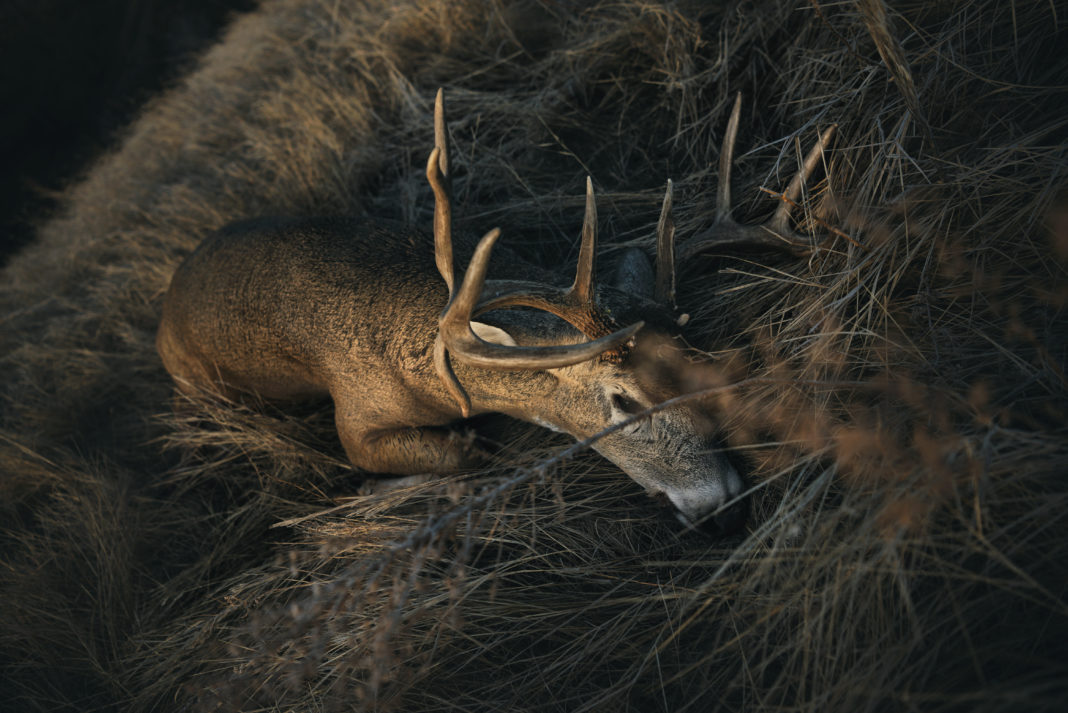A Very small window for your target buck to begin showing up is now upon us. The first step to mapping his travel routes is to start laying out a map of your property on Google Maps or a topographical map. Then place one camera in each identified location. They need to be in accessible locations for inventory and movement purposes. It is more important that you place cameras in areas heavily utilized by deer. Scrapes, logging roads, edges of food plots or agricultural fields or heavily traveled deer funnels that you can easily check them without disrupting deer activity.
Food Food Food…..
Food sources can change drastically throughout the fall so become familiar with all types; especially native browse and mast that are naturally produces year after year in your hunting area. Food sources in October and November can still be a hot ticket but bedding areas, travel routes and staging areas are usually where you will begin to see some mature buck movement. Some photos and videos of bucks you will capture may be in daylight but expect a large amount of them to occur under the cover of darkness. That’s just the nature of tracking mature bucks.
Community Scrapes and Rubs
Rubs and scrapes are deer magnets, but if you jump the gun and place trail cameras right next to them, deer will recognize this but more importantly smell human activity and avoid the scrape or rub line all together. Many bucks in the pre-rut will visit the scrape site just after dusk. Place your trail camera at least 25 yards from the scrape, ideally on one of the paths leading to it. By giving it space you can usually determine which direction the buck travels, giving you an edge to figure out how he uses this area before making your move.
Scent Control
A scent-free trail camera set up can be achieved by following these tips:
- Lightly Spray the camera with your favorite scent eliminator, and wipe off with a clean towel. Take care not to smudge the lens with the spray or you’ll end up with blurry pictures.
- Use scent-free neoprene gloves when touching and setting up the camera to reduce the human odors on the housing and mounts.
- Use those same type of neoprene gloves when you go back out to check your cameras, as well as wipe them down again with the scent eliminator spray.
- A pair of rubber boots is always a good idea to wear when visiting your cameras.
- Use Silica Gel packs to reduce human and household odors trapped in the plastic housing of the camera



















![The Best Deer Camp Chili [VIDEO] Deer Chili Ingredients, Tomatoes, Chili Spices](/wp-content/uploads/2015/10/Deer-Chili-Deer-Camp-Recipe-218x150.jpg)
![How to Call Elk Early in the Season [VIDEO]](/wp-content/uploads/2016/08/byers003-218x150.jpg)




![Idiots Disturb Hunter: How Would You Have Handled It? [VIDEO]](/wp-content/uploads/2015/10/DSC00110-e1474487693878-100x70.jpg)
![Albino Buck Shocked to Shed His Antlers [VIDEO]](/wp-content/uploads/2015/10/AlbinoDeer-100x70.jpg)